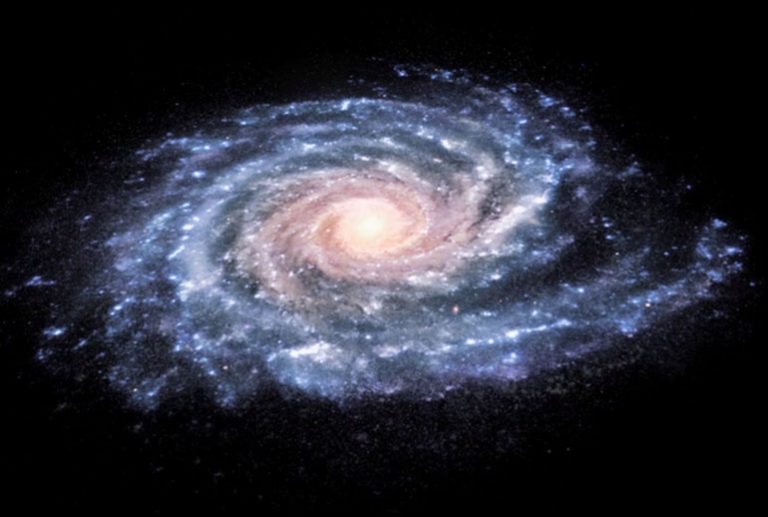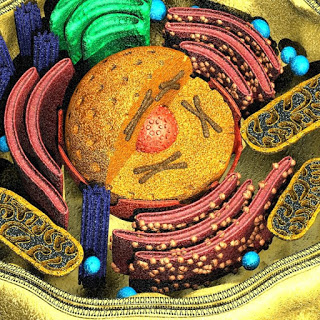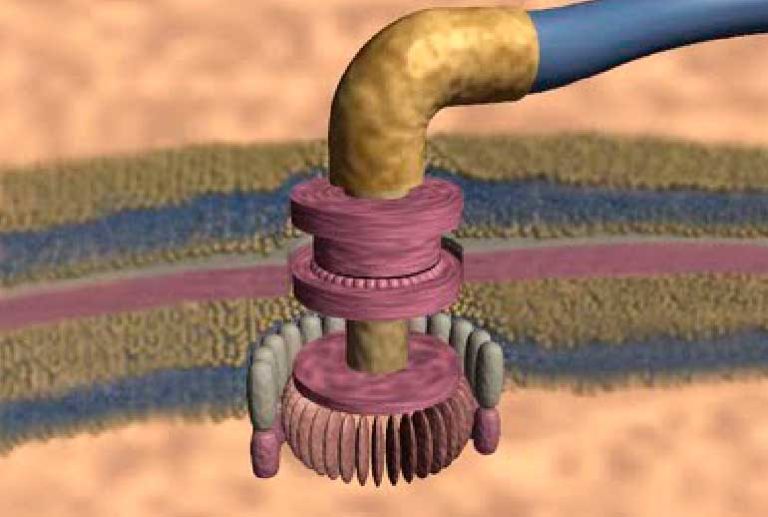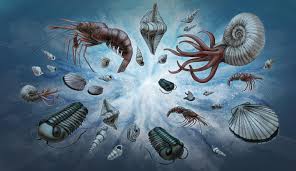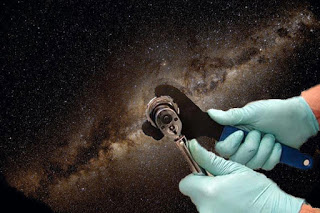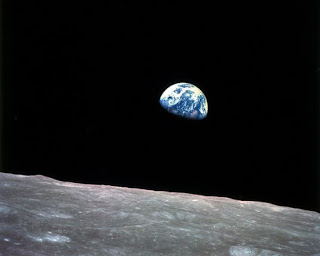To support the case for the existence of God, I have argued that both matter and life display unmistakable signs of design—and where there is design, there must be a designer. That designer, as affirmed in Scripture, is the Creator: The God of the Bible.
A powerful illustration of how design signifies intelligence appears in the film Contact[1], where actress Jodie Foster portrays Dr. Ellie Arroway, a scientist working at the Arecibo Observatory in Puerto Rico. In the storyline, she spends years listening to random cosmic noise—until one day, she detects a meaningful signal: a sequence of pulses and pauses that correspond precisely to the first twenty-five prime numbers[2] (from 2 to 101). The pattern begins with two pulses, then a pause; followed by three pulses, a pause; then five pulses, and so on. It is immediately clear to the character—and to any thinking observer—that this is not a random occurrence. The presence of a mathematical pattern, one that specifically mirrors the sequence of prime numbers, signals the involvement of an intelligent source.
Why does she—and why do we—make that conclusion? Because there are no natural law compelling radio waves to arrange themselves into prime number sequences. Such complexity, specificity, and order are empirical indicators of purpose and planning. Just as a fingerprint at a crime scene strongly suggests a human presence, a structured and meaningful signal suggests an intelligent mind behind it.
This same logic applies—yet on a vastly grander scale—to the world around us. From the microscopic intricacies of cellular machinery to the breathtaking order of galaxies, we find hallmarks of design that are deeply consistent with the biblical account of creation. And yet, naturalists persist in embracing explanations that defy both common sense and scientific reasoning. They accept, without empirical support:
- That nothing produced something.
- That a hypothetical “multiverse machine” randomly produces billions of universes per second, each with varying physical constants, until one—ours—happens to emerge with exactly the values needed to sustain life.
- That life arose spontaneously from non-living matter, by chance alone.
What evidence undergirds these naturalistic hypotheses? Often, the only answer provided is we are here. Our existence is taken as the sole validation of these immense claims. But is that truly a scientific answer?
There are only two possibilities: either life was intentionally created, or life created itself through undirected natural processes. Naturalists overwhelmingly favor the latter—not because it is more reasonable or more supported by evidence, but because the alternative would force them to confront the existence of a Creator. Such an acknowledgment carries philosophical and theological implications that many are unwilling to accept.
But consider this: if a scientist heard a sequence of twenty-five prime numbers from space, they would not hesitate to conclude that intelligence was involved. By the fifth or sixth number, coincidence would be ruled out. By the tenth, intelligence would be all but certain. By the time the full sequence is heard, it would be impossible to deny it.
So why is the same logic not applied to the human genome, where we do not find a string of twenty-five, but three billion precisely ordered information units? Why does this not signal intelligence? Why do we ignore the staggering improbability—1 in 10³⁶⁸—that the physical constants of the universe (such as gravity, the strong nuclear force, or the rate of cosmic expansion) would take on exactly the values required to allow matter, galaxies, stars, and life to form? Why is the near impossibility that only 1 in 10¹⁵ planets can support complex life not seen as evidence of deliberate design?
When evidence of intelligence is encountered in a radio signal, scientists affirm it without hesitation. But when the very structure of life, matter, and the universe speaks in the language of precision, order, and purpose, naturalists dismiss it as chance.
This is not a matter of rejecting science—it is a matter of applying scientific reasoning consistently. If we acknowledge that information and order points to intelligence in one domain, we must do the same across all domains. And when we do, the evidence strongly points to the conclusion that behind the universe stands not randomness, but reason; not chaos, but design; not blind chance, but the mind of a Creator.
Biogenesis is a foundational biological principle stating that life can only arise from pre-existing life. Despite this, some scientists have periodically proposed that life could have originated purely from inorganic matters. In the Middle Ages, it was widely believed that life—such as larvae and flies—spontaneously emerged from garbage and waste. But in 1668, Italian physician Francesco Redi[3] demonstrated that while these organisms appeared in garbage, they did not originate from it[4]; they came from eggs laid by other organisms.
Two centuries later, a new wave of scientists speculated again that microorganisms and algae might arise spontaneously from non-living material. In the mid-19th century, Louis Pasteur[5] put this hypothesis to rest. Through a series of ingenious experiments—sealing sterilized broths in flasks or using swan-necked containers—he demonstrated conclusively that microorganisms only arise from other microorganisms. No life emerged where there was no prior life. Pasteur’s work became a cornerstone of modern biology, confirming once again the law of biogenesis.
Yet a century after Pasteur, some scientists speculated that life on Earth might have spontaneously originated when atmospheric gases and chemical compounds encountered the right conditions. Space missions like Viking i and Viking ii, launched in 1975 to explore Mars—believed to have had similar origins to Earth—sought evidence of past or present life that could support this idea. However, after extensive analysis, neither mission found any definitive signs of life.
Laboratory experiments over the years have succeeded in producing amino acids or organic molecules under controlled conditions. Occasionally, unusual chains of amino acids are synthesized, prompting headlines like “Scientists Solve the Mystery of Life’s Origin” (as reported by Phys.org, August 1, 2019). Yet these headlines are often misleading. A few amino acids, some water on Mars, or the detection of organic material in meteorites do not equate to the creation of life. Life is not simply the presence of organic molecules; it is a highly organized, self-sustaining, information-driven system.
Even under ideal laboratory conditions—with carefully controlled temperature, light, and pH—placing all essential biological components (amino acids, carbohydrates, lipids) into a sterile container will not result in the spontaneous emergence of life. Remove all inhibitors, and still, life does not appear. Why? Because life is more than chemistry; it is structure, purpose, and information.
Suppose one day scientists do manage to generate life in a laboratory using the most basic building blocks. Such a feat would not prove spontaneous generation—it would instead prove design. It would confirm that life requires deliberate planning, vast intelligence, and highly precise execution. It would not refute God—it would affirm that the origin of life is an intelligent act. And if such an act were accomplished, it would merely replicate what has already been done—mirroring, not originating, the creative act of God.
Every serious experiment to date has reinforced the law of biogenesis. For naturalists to defend the spontaneous origin of life from non-living matter, they must reject this well-established law. In contrast, creationists remain consistent: life originates from life, and the original life came from the living God—the Creator who breathed life into matter. As Scripture says, “Let the land bring forth plants, those that produce seeds and fruit trees.”, “Let the waters be filled with living creatures and let birds fly above the earth in the firmament of the heavens.”, “Let the earth bring forth living creatures each according to its kind: cattle and reptiles and wild animals, each according to its kind.”, “Then the Lord God formed man out of the dust of the earth and He breathed his breath of life into his nostrils and man became a living creature.”.
Earth and water—both inorganic—did not produce life on their own, but through the action of the Creator’s Word. Matter did not become alive randomly; it was animated by the will and power of God.
Even as science breaks down the structure of dna, catalogues chemical reactions within the cell, and maps the process of cell replication, one profound question remains unanswered: Where did the information come from? We have unlocked many secrets about the composition and function of life, but we still cannot explain how matter came to know what to do.
Information is not a material substance. It is conceptual—immaterial—and yet essential. It conveys meaning, coordinates function and enables systems to work in harmony. And it is universally acknowledged that only intelligence produces information.
Throughout this chapter, I have presented concrete and empirical evidence of the vast information embedded in the universe—from dna to planetary physics. The origin of such intricate and vast information cannot be explained by chemistry alone. Consider this: if the sheer amount of information on the internet overwhelms us, how much more astounding is the information required to build and operate a single human being?
The Christian worldview offers an elegant and consistent explanation: an intelligent Creator designed life with intention and order. In contrast, atheistic theories demand belief in contradictions—violations of physics, biology, and logic—in order to dismiss the need for God.
The academically trained atheist may marvel at the structure of matter, cells, and life, yet often ignores the central issue of information. Take a smartphone: you can disassemble it into its smallest parts and examine every circuit. But without the software—the immaterial code that tells the device what to do—it is merely a paperweight. Applications have no weight or shape, yet they are essential. The same principle applies to life: without information, the cell cannot function.
As a systems engineer, I write applications daily. I must carefully plan and sequence each instruction. If I mistype a command or reverse a step, the system fails. No computer, however powerful, can “figure out” what to do without clear, intelligent input. Life is the same. The genetic code in dna is not a byproduct of chemistry; it is a structured, symbolic language—an instruction set. Only intelligence writes code.
Darwinian evolution may propose chemical processes to explain the structure of life, but it cannot explain the origin of information—which is immaterial, precise, and purposeful. Chemical reactions may assemble molecules, but they do not create syntax, semantics, or symbolic logic. The instructions found in dna require an author—someone capable not only of generating complex sequences but also of assigning meaning to them. This fundamental gap remains unbridged by purely materialistic explanations and speaks to the necessity of an intelligent cause behind the existence of life.
The invisible presence of information saturating the visible universe is an overwhelming argument against naturalism and materialism—and a resounding affirmation of the biblical Christian worldview. All scientific inquiry uncovers layers of information that point to an intelligent source. As Albert Einstein once said, “Man finds God behind every door that science manages to open.” That insight is more relevant today than ever.
If you once believed the improbable because you lacked alternatives, I hope you now find peace in knowing that science and reason do not contradict Scripture—they corroborate it. In fact, the coherence between biblical truth and scientific discovery is more compelling than any naturalistic explanation.
Does God exist? There can be no doubt.
[1] Contact is a 1997 American science fiction drama film directed by Robert Zemeckis. It is an adaptation of the 1985 novel of the same name, written by Carl Sagan.
[2]Prime numbers are those that can only be divided evenly by themselves and by one.
[3]Francesco Redi (Arezzo, February 18, 1626 – Pisa, March 1, 1697) was an Italian physician, naturalist, physiologist, and writer. He is regarded as the founder of helminthology, the scientific study of parasitic worms.
[4]To test his hypothesis, Redi placed a piece of meat into three identical jars. He left the first jar open, sealed the second with a cork, and covered the third with a tightly secured piece of cloth. After several weeks, he observed that larvae had appeared only in the open jar. Although the contents of the second and third jars had decomposed and produced a foul odor, no larvae were present. From this, Redi concluded that the flesh of dead animals does not spontaneously generate worms unless insect eggs are deposited in it.
To address the possibility that air might have influenced the outcome, he conducted a second experiment using meat and fish in a jar covered with fine gauze. Over time, he observed that flies did not enter the jar but laid their eggs on the gauze itself. The results mirrored those of his first experiment. From his work comes the famous phrase “omne vivum ex ovo, ex vivo“, which translates as “all life comes from an egg, and that egg from the living.”
[5]Louis Pasteur (Dole, France, December 27, 1822 – Marnes-la-Coquette, France, September 28, 1895) was a French chemist and bacteriologist whose groundbreaking discoveries had a profound impact on the natural sciences, particularly in the fields of chemistry and microbiology.


